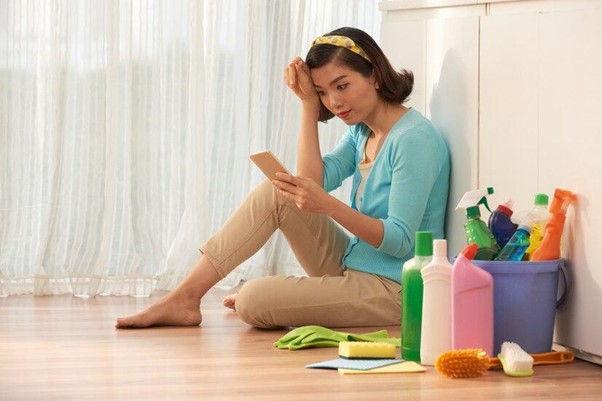9 Floor Cleaning Tips and Tricks for a Spotless Home
How does it feel when you walk into a floor that is sparkling and dirt-free, while still having a pleasant smell? That is something that everyone would appreciate. It is not only aesthetically pleasing, but it also provides a healthy and clean living environment.
As a result, keeping the floor clean is critical to maintaining a pleasant ambiance, preventing bacteria and allergens, and lowering the danger of slips and falls. For your convenience we’ve compiled a list of 9 floor cleaning methods to help you achieve the pristine home you’ve always desired.
Tip 1: Choosing the Right Cleaning Products
When it comes to cleaning the floor and maintaining a clean home, the first and most important step is to choose the appropriate cleaning products. If you make the mistake of not using the proper floor cleaning chemicals, you risk damaging the floor, causing it to become discoloured, damaged, or slippery.
So, depending on your floor, for example, if it is a wooden floor, use friendly products, and if it is tile, use tile cleaning products to get the most effective cleaning results. Also, keep in mind the bacteria-killing power. Dettol Floor Cleaners are a great alternative when it comes to cleaning the floor to eliminate dirt, kill bacteria, and offer a smooth delightful home environment.
Tip 2: Sweeping or Vacuuming
This is another critical aspect of keeping your floor sanitary. It is essential to remove all loose dirt and debris from the floor by sweeping and vacuuming first. Sweeping or vacuuming also successfully removes crumbs, dirt particles, and hair. If you are not sweeping or vacuuming prior to mopping, it can get trapped while mopping and spread all over the floor, making the floor unhygienic.
Tip 3: Art of Mopping
Mopping the floor is the third and last step in cleaning it. Dilute the required amount of floor cleaner liquid, such as Dettol, in water. Dip the cleaned mop into the solution, wring it out until damp, and then begin cleaning the floor. Take a little area at a time and mop it thoroughly. If you notice any stubborn stains, apply a little Dettol and leave for 5 minutes before gently mopping it.
Tip 4: Tackle Tough Stains Promptly
Always keep an eye out for spots with oils, food stains, or other types of tenacious stains, otherwise, the entire floor may be spared as you step on it. It may also trigger a slip or fall. So, clear these stains as soon as possible using floor cleaner solutions to maintain a flawless and hygienic floor all the time.
Tip 5: Protect Your Floors from Damage and Bacteria
Continue to practice basic good practices, such as placing a door mat at the entrance, allowing dirt from the outside to be trapped in the doormats, and keeping your floor clean. Use furniture pads on the floor for house stuff like dining tables and chairs. Attach furniture pads to their legs to prevent scratches and scuffs on the floor.
Tip 6: Embrace Regular Cleaning
Keep cleaning your floor according to your lifestyle; for example, if there is a lot of foot traffic at your house every day, try to clean it at least twice a day; if there are only one or two members, you can clean the floor once a day.
Don't wait for the time that has been scheduled to clean; you must clean even if the floor is already dirty. Otherwise waiting for the next time of cleaning session may allow germs to spread around the house. So, when it comes to cleaning, take immediate action.
Tip 7: Declutter for Easy Cleaning
A clutter-free environment is usually easier to clean. So, arrange your floor furniture so that you may clean it properly at any moment and from any corner of the floor. This will help you eliminate any bacteria from the floor.
Tip 8: Seek Professional Help for Damaged Floors
If a tile on your floor is broken or a wooden floor has cracked, don't leave it alone as this can cause the entire floor to get dirty from debris from the damaged regions. There is also the risk of being hit while walking for your kids and family members or others. So call a professional and have it repaired.
Tip 9: Steam Cleaning for Deep Hygiene
It is important to create a comprehensive cleaning schedule not only to maintain the sparkle of your floor but also to eliminate any stubborn germs or stains. It is not necessary to give your floor a deep cleaning only when it becomes completely dirty; it should be done once a week or every two weeks.
So, incorporating these 9 floor cleaning strategies would keep your floor free of bacteria and viruses that could harm your family members and others. Keep cleaning your floor in the right manner, from selecting the right disinfectants and floor cleaning chemicals to developing a daily cleaning routine. It is time to put a flawless floor beneath your feet, not merely to walk on it, but also to live the most pristine life possible.
